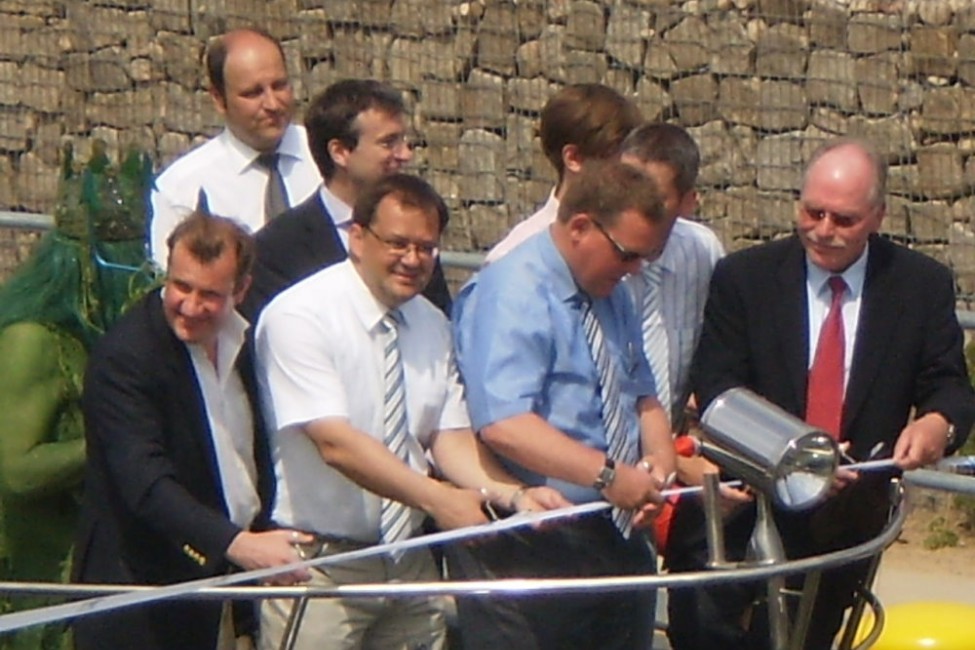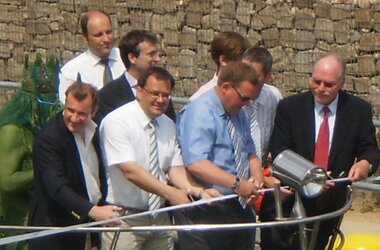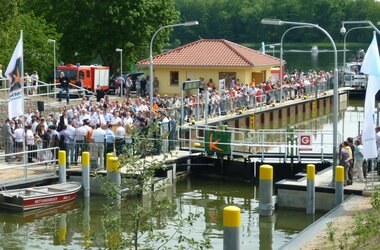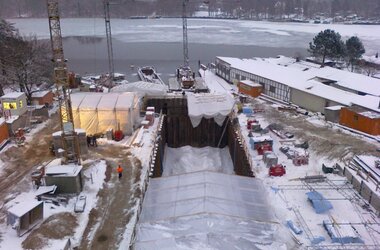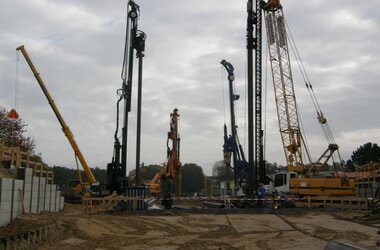New lock in Fürstenberg an der Havel:Opening in time for the 2010 summer season
Fürstenberg lock was officially opened on 6th June 2010, following a 6-month closure of the Oder-Havel waterway. In the presence of Thomas Menzel (President, Waterways and Shipping Directorate East), Jörg Vogelsänger (Minister for Infrastructure and Agriculture of the state of Brandenburg), Robert Philipp (Mayor of the town of Fürstenberg/Havel), Max Hiller (chief executive of the water sports trade association Wirtschaftsverband für Wassersport e.V.) and Peter Teßmer (Managing Director of Gebrüder Kemmer GmbH), the lock was opened for traffic.
Fürstenberg lock was officially opened on 6th June 2010, following a 6-month closure of the Oder-Havel waterway. In the presence of Thomas Menzel (President, Waterways and Shipping Directorate East), Jörg Vogelsänger (Minister for Infrastructure and Agriculture of the state of Brandenburg), Robert Philipp (Mayor of the town of Fürstenberg/Havel), Max Hiller (chief executive of the water sports trade association Wirtschaftsverband für Wassersport e.V.) and Peter Teßmer (Managing Director of Gebrüder Kemmer GmbH), the lock was opened for traffic.
Because the old Fürstenberg/Havel lock, built in 1927, was severely damaged and could no longer be adapted to meet the requirements of the rapidly developing water-based tourism industry, the Federal Waterways Administration decided to replace it with a new lock. Up to 25.000 vessels pass through the lock each year, with around 6.000 boats per month passing through the structure during the peak summer months.
Mr. Jörg Vogelsänger thanked the federal authorities, the construction firms and the planners involved for ensuring that the lock was constructed in a very short time and that the canal was not closed during the peak season. To make this possible, the construction schedule was optimized; for instance the sheet pile walls of the construction pit were used as the lock chamber walls. They also served as lost formwork for the lock pounds so that the lock chamber, which is now 11 m wide, can accommodate twice as many boats as the old structure.
Dr. Lindlar of KREBS+KIEFER Berlin was the checking engineer for this project. His task included technical inspection of the concrete and steel hydraulic engineering structure, the lock and the upper pound as well as the temporary structures and the execution documentation. He was also responsible for monitoring cost-effectiveness and supervising special components of the structure.
